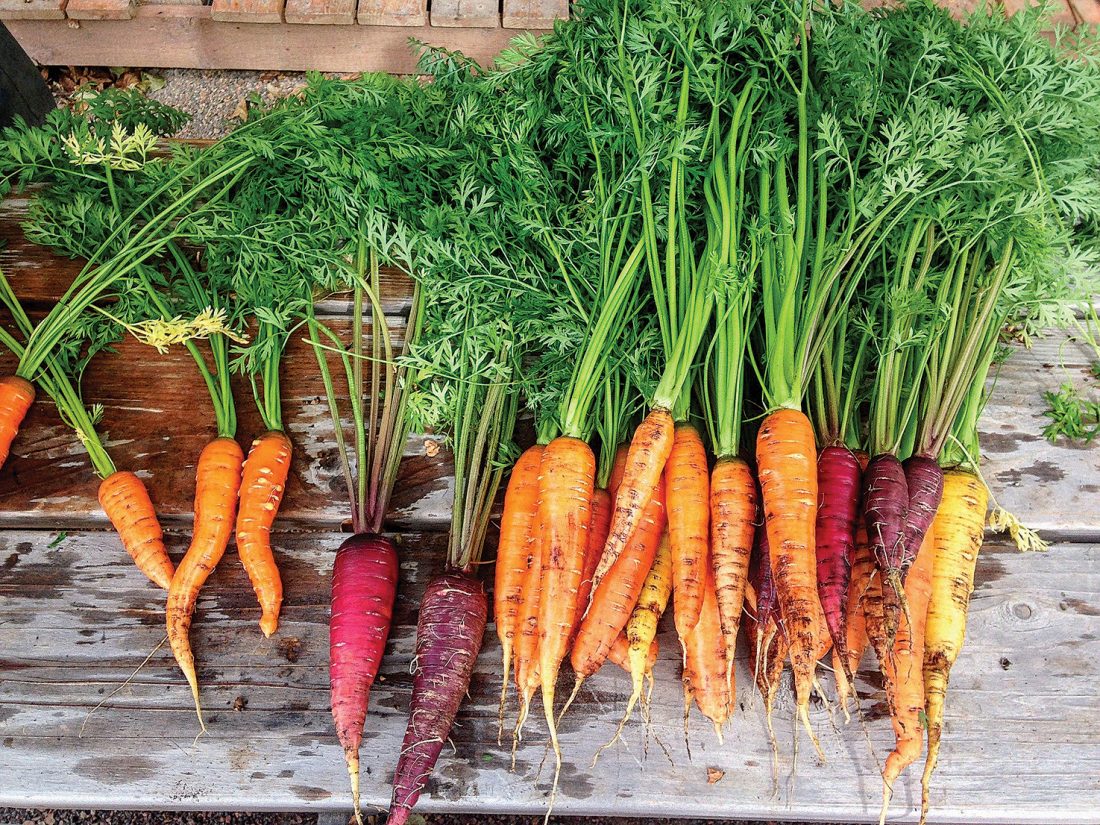Carrot: A tough root to take root

Submitted Photo Carrots are cool weather crop. Photo from Pixabay.
Recently, I received a call at the Extension office about, “sowing your carrot seeds and then placing a board over them until they germinate.” The person asked if I had ever heard of this? Well, no I had not, so I looked on the NDSU Extension website, found nothing, and advised on how to sow carrots with other proven methods. I didn’t think much more about it until a week or so later when once again, I heard chatter about people putting boards over sown carrot seeds. Now I needed to investigate. I checked with a few universities and there was nothing on this new carrot planting craze. I decided to visit YouTube and I found videos about this ‘board germinating carrots’ method.
Here is what I learned. Direct sow the carrot seeds. Some said to cover lightly with soil and others said no need. Then, cover with a board – no dimensions for the board were given, but it looked like a 1-inch by 4-inch. Water the top of the board. The water will trickle down around the edges of the board to dampen the seeds. Then, check daily for moisture and germination. Once the seeds have germinated, remove the board.
Sounds easy enough, but here is the disclaimer: I have no idea if this works or if research has been done on this, therefore NDSU Extension does not advise trying it. If you did, however, try the “board” method and if it backfired, do not worry, there is still time to get those carrots in.
Check the information on the back of the seed packet for harvest time. The majority of the ones I read indicated there was plenty of time left. Carrots are a cool weather crop. Seeds will germinate in the 70-80-degree soil temperature range. If soil temperatures are over 80 degrees, the seeds will struggle or may not germinate at all.
Also, carrots do not like rich soil – just a slow-release fertilizer and some well-aged compost is sufficient, not much more than that. High nitrogen fertilizer or strong manure can cause poor germination, branching, development of excess legs, side roots, or even splits.
Loose, fluffy, well-draining soil that is free of rocks, stone or pebbles will produce a nice crop of carrots. If you have clay soil, try adding well-aged compost to lighten it up. If the soil is too hard and compact, try a raised bed or container with growing medium purchased at a box store.
A common carrot problem is forking. This occurs when the growing tip of the root has been damaged by someone or something. The someone may be a soil insect or a nematode that has nibbled on the tip of the root. The something is likely obstacles in the soil, such as small pebbles or stones or too shallow of a container. Gardeners battling heavy clay soil may also notice a larger percentage of forked carrots. Forking looks funny, but does not affect the favor. Flavor may be bitter however, if there is not enough water. Too little water will also cause undersized, tough carrots.
Carrots do not require immediate harvest. They can be left in the ground until late fall or even after the first frost.
Did you know? Colonial America first saw carrots in the 17th century, when European settlers introduced the vegetable there. (www.factslegend.org) Carrots, domesticated from the wild carrot, Daucus carota, is native to Europe and Southwest Asia. The domestic carrot has been selectively bred for its greatly enlarged, more palatable, and less woody-textured taproot. It is usually orange in color, although purple, black, red, white, and yellow cultivars exist. The mostly commonly eaten part is the taproot, but the stems and leaves are edible as well. You cannot beat the taste of a roasted homegrown carrot.
Happy Gardening!




